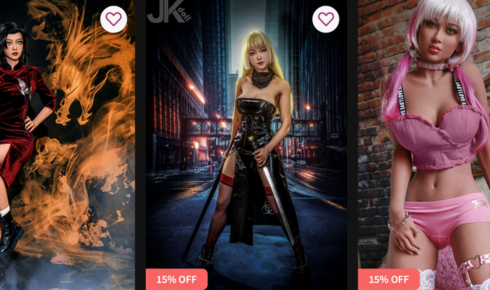Few categories in the world of realistic dolls provoke as much discussion as the so-called teen range. To be clear, these products are strictly marketed for adults and designed with models that are over 18, but their aesthetics reflect youthfulness, slim silhouettes, or smaller body frames. This deliberate design choice has sparked ongoing debate across cultural, ethical, and legal lines. In countries such as Australia, where regulation of adult products is both strict and actively enforced, the conversation becomes especially complex.
The Legal Framework
The sale of realistic dolls is legal in Australia, but the industry operates within a framework that is highly sensitive to how these products are described and presented. Authorities draw a clear line between adult-oriented designs and anything that could be interpreted otherwise. Retailers such as Leeloo Dolls emphasize transparency, ensuring that all teen sex doll models comply with international standards and are categorically marketed for customers over 18.
The Australian debate mirrors global discussions, where laws differ from one jurisdiction to another. Some countries enforce blanket bans, while others focus on age verification, packaging, and presentation. For legitimate businesses, clarity is key: it helps maintain consumer trust and protects the industry from being overshadowed by grey-market practices.
Cultural Reactions
Public opinion is divided. Supporters of the category argue that personal freedom and choice should guide the market. They see these dolls as part of a broader expansion of adult lifestyle products, where diversity in design is essential to meeting different preferences. Critics, however, raise concerns about the potential blurring of ethical boundaries. This tension is particularly visible in societies like Australia, which balance progressive attitudes towards adult products with strong regulatory oversight.
Features of the Teen Category
What exactly defines this category? Typically, teen-style dolls are:
- Smaller or lighter in build, often easier to handle than full-sized models.
- Styled with youthful features, though always over the legal threshold of 18+.
- Popular with buyers seeking a more compact, less conventional design.
This variation explains why the category has its own dedicated audience. For some, it is less about age-related aesthetics and more about proportions, weight, and practicality.
Ethical Discussion
The strongest debate surrounding teen-style dolls is ethical. At what point does design cross into territory that society is unwilling to accept? And how can businesses balance customer choice with cultural sensitivity? In Australia, industry leaders emphasize compliance and transparency. By framing these dolls clearly as adult products, they signal respect for legal and moral boundaries.
It is also worth noting that discussions about this category often spill into broader questions: what role do adult products play in society? How should industries adapt to changing cultural standards? For many, the debate around teen dolls is not just about the products themselves but about freedom, regulation, and how a community defines responsibility.
A Balanced Perspective
The teen category remains controversial, but it cannot be dismissed as a fringe issue. Instead, it highlights the ongoing tension between innovation, personal choice, and cultural boundaries. In Australia, where regulation is strong, these dolls occupy a carefully managed space: legal, adult-oriented, but always under scrutiny.
For consumers, retailers such as Leeloo Dolls offer assurance. By making compliance and discretion part of their core values, they help ensure that even contentious categories are handled responsibly. For the wider industry, the discussion itself is valuable: it keeps the spotlight on accountability, reminding everyone that realism and artistry must always operate within both cultural and legal frameworks.
Tags: teen sex doll
